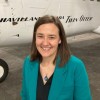
26 Results:
This link leads to an external website that Ingenium does not control. Please read the third-party’s privacy policies before entering personal information or conducting a transaction on their site.
Have questions? Review our Privacy Statement
Ce lien mène à un site Web externe qu'Ingenium ne contrôle pas. Veuillez lire les politiques de confidentialité des tiers avant de partager des renseignements personnels ou d'effectuer une transaction sur leur site.
Questions? Consultez notre Énoncé de confidentialité